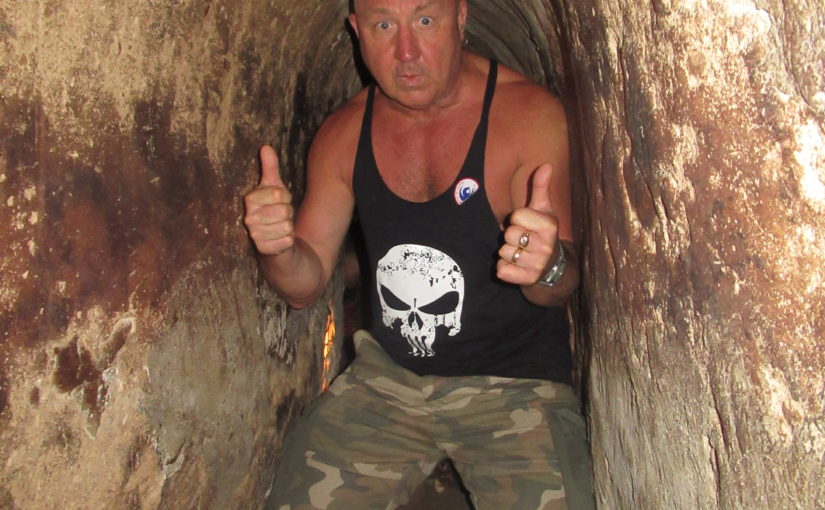EXCITED DELIRIUM & HOW WE SHOULD INCLUDE IT IN OUR TRAINING
Picture the scene Night Shift
It’s an unusually quiet Sunday evening for a very busy city centre Police Station. The officer is on night duty with a colleague working on the front desk. The evening is going quite well and seems like the usual Sunday night, there are people coming in to collect family or friends who have been in custody, others coming in to report crimes, to give statements etc. Its about 23:00hrs when a familiar face walks in from the street, it’s a local homeless guy who is looking for a warm and a chat, its quiet now so he tells him he can stay sat in the corner as long as it remains quiet and if it gets busy he is to leave.
Its now around 01:00hrs now when a guy walks in crying and looking really agitated, the officer asks “can I help you sir” and he turns around and walks off laughing !!!. Half an hour later he returns still crying, again the officer asks if he can help him, he then replies “I have a gun and if I was to put it against your head, no one would now right” now the station does not have cameras in the front office and the officer says “Not really”. The guy walks away laughing. Now it has gone quiet for about an hour when the same guy walks into the station and gets on his knees and begins to prey whilst crying. The homeless man tells him to talk to me and that I can help him. The Officer keeps asking him if he is ok but the guy on his knees is still preying and it seems as though he doesn’t realise people are talking to him. Suddenly the guy gets up and jumps over the counter by which time the Officers colleague hits the shutter button and hides under the desk as this man is potentially armed with a firearm. The Officer calls for assistance as the man has disappeared into the station. The controller tells the Officer that no one is available in the station but Firearms unit has been called and are responding. Mean time the officer goes on search for the guy and finds him in the basement. The officer tries to calm the man down but he just ignores the fact that the officer is even there. The man is standing shouting to an imaginary person, he is soaking with sweat. The officer approaches him on his own without waiting for back up as there are people behind the door that the man is standing by so it was the officer’s duty to make sure the other people were safe. Talking to the man doesn’t work so the officer approaches after looking for visible signs of a weapon. The officer takes his arm and the guy throws him off like he is a rag doll. The Officer tries again but like last time the guy throws him off. The officer walks up behind him kicking him behind the knees at the same time bringing the guy backwards and wrestles with him, the guy has amazing strength and starts to
fight the officer off, despite all of the techniques he uses, and the officer just can’t control him. At this point, the firearms team turn up and take over the situation; there were approximately 10 officers at this time trying to control the man. He is finally restrained and all the officers carry the guy up to the custody suite where he is detained. When he was searched there was no weapon found and it later turned out that he never had a weapon. The duty Dr was called and it turned out that the guy was suffering Excited Delirium after taking cannabis and crack cocaine. The parents of the guy said how much of a nice man he was and that he enjoyed a smoke and never had any problems before. The story turned out that his friends mixed crack and he never knew which in turn caused ED and resulted in him being arrested.
That story is true and in fact the officer was me. Coming across someone with ED is a scary experience and no matter what you know, it doesn’t help. We have to approach it is a different way.
Exited Delirium is an acute behavioural disorder, with a range of symptoms. It has been linked to long-term drug use and mental illness. It is often attributed to deaths with Positional Asphyxia.
The need for understanding Excited Delirium isn’t just for professionals such as Police, Prison officers and Medical staff but also for Self Protection Instructors. Understanding the signs can help prevent a potentially dangerous situation. There are certain features associated with Excited Delirium that can be exhibited during the use of force encounter or in a Self Defence situation:
- Pain tolerance https://www.youtube.com/watch?v=F4VeHOkt_o8 –
- Constant/near constant activity
- Not responsive to police presence
- Superhuman strength https://www.youtube.com/watch?v=Uc3DJ0tq_FU
- Rapid breathing
- Does not fatigue
- Naked/inappropriately clothed https://www.youtube.com/watch?v=Ai2bVK_BGHs
- Elevated Body Temperature i.e.; Sweating profusely https://www.youtube.com/watch?v=gmxkC7wN7AE
- Glass attraction/destruction.
- Violent or bizarre Behaviour
- Delirium
- Agitation https://www.youtube.com/watch?v=6zQKfo_Q23g
- Disorientation
- Anxiety
- Hallucinations
- Speech Disturbances
If you happen to get caught up in a Violent encounter with someone suffering fro Excited Delirium you will find that the person experiencing an episode of ED will not feel the exhaustion from fighting and will fight with everything they have got and then some. So you have to be prepared for a long process that could ultimately either get yourself or the person suffering the episode killed.
In these circumstances the person attempting to defend themselves may respond with extra strength or man power and this can end in an individual being restrained in a way that restricts oxygen intake, together with sudden exhaustion this can lead to death through lack of oxygen.
The risk of unknown medical issues together with the escalation in the use of force can cause multiple complications even death, Video shows male being arrested and excessive use of force by Police officers to a man with Excited Delirium, make note of the officer kneeling on the restrained mans back. https://www.youtube.com/watch?v=GdzpoS8pTks&has_verified=1
What can be done to help elievate this problem
Lacking the necessary knowledge to identify probable cases of Excited Delirium, you could be at a disadvantage in terms of safety for yourself, the individual having the ED episode, and the public. So its in the interest of yourself and the public’s safety to provide training to ensure positive outcomes in cases of ever encountering someone who has Excited Delirium.
Training should include mental health issues, crisis-intervention, de-escalation, First Aid, CPR, and the Use of force.
There may not be too much you can do to fully mitigate the risks of excited delirium but you may well be confronted by someone with excited delirium. Knowing what to look for can help. A mnemonic for recognising the symptoms :
NOT A CRIME, created by emergency physician and EMS medical director Dr. Michael Curtis:
N: Patient is naked and sweating from hyperthermia (opposite of hypothermia) body temperature of over 40°c
O: Patient exhibits violence against objects, especially glass
T: Patient is tough and unstoppable, with superhuman strength and insensitivity to pain
A: Onset is acute, witness say the patient “just snapped!”
C: Patient is confused regarding time, place, purpose and perception
R: Patient is resistant and won’t follow commands to desist
I: Patient’s speech is incoherent, often with loud shouting and bizarre content
M: Patient exhibits mental health conditions or makes you feel uncomfortable
E: Emergency should request early backup and rapid transport to the Hospital
As with all violent situations someone faced with someone in a state of Excited Delirium should try and de-escalate the situation using verbal calming techniques. Due to the nature of acute behavioural disorder a person’s reaction to de-escalation techniques may be very
unpredictable and so restraint may be needed. This should be kept to a minimum using a level of force that is justifiable, reasonable and proportional to the individual case. If restraint is needed keeping a person in the prone position should be avoided at all costs and they should be constantly monitored.
As excited delirium is classed as a medical emergency and so the first line should be realising the difference between a violent outburst and excited delirium. If it is thought that someone is suffering from acute behavioural disorder emergency medical help should be sought out straight away so that they can be helped.
We now know that it is extreme mental & physiological excitement, characterised by extreme agitation, hypothermia, hostility, exceptional strength & endurance without fatigue.
Causes of Excited Delirium can be from a number of factors such as; Substance Abuse, Mental illness, Combination of Substance abuse & Mental illness.
SUBSTANCE ABUSE
Unpredictable Reaction to: Cocaine, Methamphetamine, PCP, Discontinuation of anti-depressant medication
MENTAL ILLNESS
History of Depression, Schizophrenia or Bipolar Disease – History of Other Psychotic Background
SIGNS AND SYMPTOMS
- Hyperthermia – overheating
- Foaming at the mouth
- Drooling
- Dilated pupils
- Unbelievable Strength
- Impervious to Pain
- Aggression
- Hyperactivity
- Elevated Pulse Rate
- Extreme Paranoia
- Incoherent Shouting / Noises
- Bizarre and Violent Behavior
- Removal of Clothing
- Able to Offer Effective Resistance to pain and fight for Extended Time
COMPLICATIONS
- Hyperthermia (dangerously high temp)
- Blood Acidosis
- Electrolyte Imbalances
- Breakdown of Muscle Cells Leading to Heart Arrhythmia
- Susceptible to Ventricular Fibrillation
- Death
AGGRAVATING FACTORS
- Ineffective Respirations Caused by Extended Prone Restraint (positional asphyxia)
- Extended Violent Resistance
- Delayed Emergency Life Support
RECOMMENDATIONS
- Emergency response if possible when Excited Delirium is recognised
- Extra Training for all who may face people with excited delirium
- Delay struggle/restraint process until sufficient personal are on hand to perform rapidly and safely
- Immediate Emergency support upon restraint
- Use of Force Options (pain compliance may not be effective)
- Control Holds
- Impact Weapons may not be effective (Remember the laws on use of force for your country)
- Tasers – Single Application **If in a country that the use of Tasers are legal**(not effective in pain compliance mode)
- Restraint Positions
- Avoid Extended Time in Prone Position
- On Subjects Side
- Supine
- Monitor Vital Signs
- Transportation
- To Hospital by Ambulance
- Restrained for Transport
- Officer to Accompany Ambulance
CONCLUSION
This is a life threatening medical emergency which often presents itself as a law enforcement problem but can possibly happen within a Self Defence situation, Effecting physical control may be dangerous and difficult and despite all possible precautions death may still occur as the result of the excited delirium.
“You as Instructors should be teaching this as part of your curriculum”








